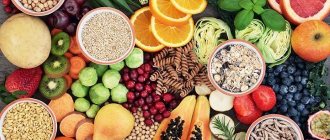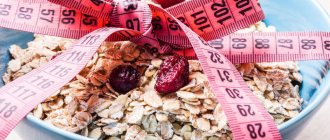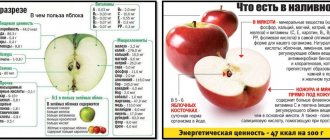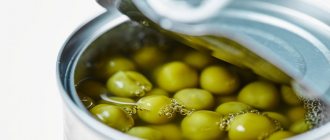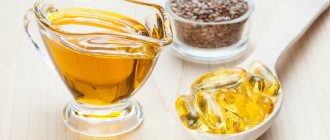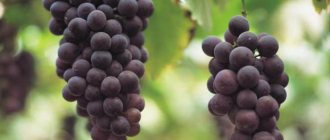Calorie content of green onions
Proper, balanced nutrition requires a certain consumption of KBJU (the ratio of calories, proteins, fats and carbohydrates that enter the body with food). Therefore, it is important to know how many calories are in fresh green onions, as well as its composition. Onion feathers have a low calorie content - 19 kcal per 100 g of green mass. The protein content in feathers is 1.3 g, carbohydrates - 3.2 g, fat - 0.1 g. These are very small indicators of the energy value of a food product, so it can be freely included in the menu for those who are watching their weight or adhering to certain diets
It is important to note that the calorie content of green onions of different types and varieties differs from each other. The tubular or flat, green stems of some varieties of perennial onions have a higher calorie content:
- shallots - 72 kcal;
- leek - 36 kcal;
- batun - 30 kcal.
All varieties of green onions are a low-calorie product (up to 80 kcal per 100 g). Eating greens, which contain a storehouse of nutrients, has a positive, healing effect on the human body. The presence of a rich set of natural microelements and vitamins in the product makes it indispensable in the diet.
Did you know? The calorie content of fresh green feathers is half that of onions.
Chemical composition of green onions
Green onions have been used as food since ancient Asia. Wild greens were used as a seasoning for dishes and in raw form by nomadic shepherds. Gradually the culture spread throughout the world.
Green onions are a source of vitamins, micro- and macroelements, and antioxidants. The product contains about 30 mg of ascorbic acid per 100 g, which is 50% of the daily requirement of the vitamin for an adult. Sulfur is responsible for the specific smell of onions - its amount is 24 mg.
Table of vitamin and mineral composition of green onions (per 100 g).
| Name | Content | Norm |
| Vitamin A | 333 mcg | 900 mcg |
| Beta carotene | 2 mg | 5 mg |
| Vitamin B1 | 0.02 mg | 1.5 mg |
| Vitamin B2 | 0.1 mg | 1.8 mg |
| Vitamin B4 | 4.6 mg | 500 mg |
| Vitamin B5 | 0.13 mg | 5 mg |
| Vitamin B6 | 0.15 mg | 2 mg |
| Vitamin B9 | 18 mcg | 400 mcg |
| Vitamin C | 30 mg | 90 mg |
| Vitamin E | 1 mg | 15 mg |
| Vitamin H | 0.9 mcg | 50 mcg |
| Vitamin K | 166.9 mcg | 120 mcg |
| Vitamin PP | 0.5 mg | 20 mg |
| Niacin | 0.3 mg | — |
| Potassium | 259 mg | 2500 mg |
| Calcium | 100 mg | 1000 mg |
| Silicon | 5 mg | 30 mg |
| Magnesium | 18 mg | 400 mg |
| Sodium | 10 mg | 1300 mg |
| Sulfur | 24 mg | 1000 mg |
| Phosphorus | 26 mg | 800 mg |
| Chlorine | 58 mg | 2300 mg |
| Aluminum | 455 mcg | — |
| Bor | 220 mcg | — |
| Vanadium | 11.2 mcg | — |
| Iron | 1 mg | 18 mg |
| Iodine | 1.5 mcg | 150 mcg |
| Cobalt | 7 mcg | 10 mcg |
| Lithium | 6 mcg | — |
| Manganese | 0.2 mg | 2 mg |
| Copper | 92 mcg | 1000 mcg |
| Molybdenum | 20 mcg | 70 mcg |
| Nickel | 2.3 mcg | — |
| Rubidium | 453 mcg | — |
| Selenium | 0.5 mcg | 55 mcg |
| Strontium | 25 mcg | — |
| Fluorine | 70 mcg | 4000 mcg |
| Chromium | 4 mcg | 50 mcg |
| Zinc | 0.3 mg | 12 mg |
What are the benefits of green onions?
Nature has so harmoniously combined all the beneficial substances and compounds in green onions that they are almost completely absorbed by the human body, having a strengthening effect on it:
- vitamin A (retinol) - improves vision, condition of skin, nails, hair, accelerates fat metabolism and cell growth;
- vitamin C (ascorbic acid) - increases immunity, prevents diseases of the heart and circulatory system, slows down the aging of the body, reduces the likelihood of developing cancer, accelerates the healing process of wounds;
- vitamin PP (nicotinic acid) - promotes appetite and biochemical reactions in cells, increases the permeability of vascular walls;
- vitamin B1 (thiamine) - stimulates brain activity, maintains muscle tone, enriching them with oxygen, sucrose and other nutrients;
- phosphorus, calcium, magnesium, fluorine - are responsible for the strength of bones and tooth enamel, control blood sugar levels, improve the regeneration of soft tissues, and maintain potency in men;
- iron - participates in maintaining hemoglobin levels, prevents the destruction of dental tissue, supports the functioning of the brain and thyroid gland;
- zinc - normalizes the menstrual cycle and hormonal balance, has a beneficial effect on a woman’s reproductive functions, and prevents retinal detachment;
- phytoncides (volatile biologically active substances) - suppress the growth and development of bacteria, increase the body's resistance to toxins, relieve inflammation of the gums, the development of caries and stomatitis, fight colds, infectious and viral diseases, stabilize the general condition of the digestive system.
Due to the rich range of useful substances and the presence of positive qualities, greens are widely used for a healthy, balanced diet, in cosmetology and folk medicine, with various diets. Regular consumption of greens prevents the development of osteoporosis and other bone diseases;
improves digestion, supports the functioning of the cardiovascular system and blood microcirculation, helps to withstand stressful situations, and acts as an antiscorbutic agent. Onions are useful for diabetes - it regulates blood sugar and stimulates the production of insulin, and also in baby food - it increases immunity, saturates the body with vitamins, and serves as a prevention of colds. Did you know? One green onion contains 16% of the daily dose of vitamin K (phylloquine), necessary for the growth and development of healthy bone tissue in the body.
Growing juicy, fragrant feathers at home is not a tricky task, but it still requires a little effort and time, which not everyone can afford. You can buy finished products at any time of the year at the market or in a store. When purchasing greens, it is important to know the criteria by which a first-class, excellent quality product is determined.
Medicinal properties
Chives have been valued for their medicinal properties by many cultures around the world. This plant is an effective remedy for the prevention of cancer and cardiovascular diseases. Some studies have shown that onion consumption is associated with a reduced risk of stomach cancer [2]. This plant helps reduce the level of triglycerides, cholesterol and thromboxanes (substances that are involved in the development of cardiovascular diseases) in the blood. In addition, green onions are known to reduce the risk of osteoporosis.
To further understand these potentially beneficial qualities, scientists studied specific compounds found in onions. Much research has focused on one flavonoid, quercetin, which is found in particularly high quantities in the leaves. It functions as an antioxidant, deactivating molecules that are harmful to the body's cells. The beneficial properties of quercetin are as follows [3][4]:
- slows tumor growth;
- promotes the healing of stomach ulcers;
- inhibits the proliferation of tumor cells of the ovary, colon and mammary gland;
- has an anti-inflammatory effect.
Vitamin C contained in green onions prevents the development of infections and also helps strengthen the immune system. Onion juice has a strong antimicrobial effect and helps prevent colds. It also destroys tuberculosis and diphtheria bacilli [5].
Features of choosing quality greens when purchasing
Onion greens are sold fresh and frozen. Feathers lose a large amount of their positive taste and nutritional properties when exposed to low temperatures (freezing). Therefore, it is recommended to purchase them only in case of emergency. When purchasing a frozen product, give preference to onions with a rich green color, straight shoots that are not bent or broken. If the onion leaves are very dark and traces of damage and spoilage are visible, then you should refuse to purchase such a product.
High-quality green onions should be:
- intense dark green color;
- elastic, dense, not flaccid, with no dry pen tips;
- no stains, damage, or visible signs of deterioration;
- with a clearly defined demarcation line between the white and green parts of the plant (this feature indicates the juiciness of the vegetable);
- saturated with the specific aroma of this product;
- When packaging in containers, remain dry (condensation in the container is not acceptable).
Learn about the benefits and harms of green onions for human health.
Greens that have violations of these parameters will not be tasty, high quality or nutritious.
You should refrain from buying vegetables if the following signs are expressed:
- mucus on feathers - spoilage of the product, its long-term storage;
- plaque (of different types and colors) - excessive use of fertilizers and growth stimulants, as well as drugs to increase shelf life;
- dry tip of the pen - lack of moisture during cultivation - the onion will not be so juicy;
- sluggish, flabby, yellowed feathers - the presence of onion diseases;
- moisture in a container with herbs is the first symptoms of product spoilage;
- weakly expressed characteristic aroma of onions, or its absence - grown in greenhouses using large amounts of inorganic fertilizers;
- blurred border between the white and green parts of the feather - hardness, dryness of the vegetable;
- damage to leaves (bent, broken, cracked) - bacteria may accumulate in places of defect, shelf life is limited.
This culture has a characteristic feature: the darker and richer the color of the leaves, the sharper, more pungent their taste. To avoid spoilage of the product, it is recommended to wash the greens immediately before consuming them. Regular use of green onions in the diet is a powerful source of health. But the use of this vegetable in the daily diet must be approached wisely, paying attention to some of its aspects and features.
Rules and regulations for use
In order for the product to fully benefit the body, vitality and good spirits, it is advisable to adhere to the following instructions regarding it:
- use, if possible, only fresh (adding to salads, omelettes, soups, etc.);
- to improve absorption by the body, consume with vegetable oil;
- use up in a short time (green onions are a perishable product);
- To avoid bad breath, it is advised to eat a piece of rye bread, lemon, coffee grain, cardamom or a sprig of parsley.
Important! It is not advisable for pregnant women to exceed the daily intake of onion greens: excessive consumption of the product can lead to heartburn.
It should be noted that the largest amount of nutrients and vitamins is contained in the white part of the green onion (immediately when it comes out of the onion), there are slightly less of them in the feathers of the vegetable, and there are none at all on the tips of the onion shoots (tops). Therefore, when consuming the product, it is recommended to cut off the ends of the feathers by 3-4 cm, since they do not represent any value.
For those who are healthy and do not have allergic reactions to green onions, there are no restrictions on consuming the vegetable. Eating greens, within reasonable limits, is beneficial for everyone: from small to large. However, it is advisable to exercise moderation and some caution in this. If onion belching or heartburn occurs (signs of increased acidity of gastric juice), the amount of greens consumed must be reduced.
The daily intake of green onions is about 100 g. Focusing on the individual characteristics and reaction of the body, everyone can independently determine their need for this product. Having such a wide range of positive qualities and beneficial substances, green onions, unfortunately, have some restrictions on their use in the daily diet.
Use in cooking
Content:
- Use in cooking
- Chemical composition
- Medicinal properties
- Benefits for women
- Benefits for men
- Side effects and contraindications
Green onions are an important vegetable crop. Its lower part is suitable as a seasoning or flavoring additive for almost any dish. It can be lightly fried, first cut into pieces, before adding other ingredients.
The dark green feathers of the crop are used at the very end, for example, added to stir-fries, or for sprinkling on baked potatoes. In addition, they are often used to prepare various dishes: meat products, pies, soups. Almost no salad is complete without the use of this vegetable plant.
Harm and contraindications
The green product should be taken with caution (in minimal doses) if you have the following diseases:
- ulcerative inflammation of the gastrointestinal tract, duodenum, gastritis;
- kidney and liver diseases (hepatitis, cholecystitis, etc.);
- allergic reaction to onions;
- with hypertensive crises, persistently elevated blood pressure;
- exacerbation of chronic lung disease, bronchial asthma.
Important! When including green onions in your diet if you have acute chronic diseases, consult your doctor first.
Uncontrolled consumption of a vitamin product can lead to exacerbation of chronic diseases, so take greens in moderation, in small portions. The shelf life of the green product is short, so there is a need to take some unique measures to extend the shelf life of this vegetable. Let's take a closer look at the specifics of these events.
How many calories are in different types of onions?
People ask this question quite often. It is especially of concern to those who are struggling with excess weight and watching their caloric intake. Today there are many varieties of onions. Among the most common are onion and green. The calorie content of the first reaches 41 kcal per 100 grams of product. Such a low indicator allows you to include it in the diet while following even the most strict diets. Meanwhile, green onions have half the calorie content - almost 21 kcal per 100 grams.
Methods for storing green onions
Green onions keep all nutrients and vitamins fresh in full; When salted, they are lost to an insignificant extent; when frozen, a little more. In this regard, it is important to extend the life of the product with minimal damage to its beneficial qualities. There are several ways to store greens:
- Fresh. This option involves storing the green mass in the refrigerator or other cool place, such as a cellar. You should immediately take into account the fact that water greatly reduces the shelf life of green onions. Based on this, it is not recommended to pre-wash the vegetable, but only wipe it with a napkin to remove excess moisture from the feathers. Damaged and spoiled leaves must be removed. Prepared products are placed in plastic bags, food containers or glass jars with lids. The shelf life in this case is no more than 5 days. Greens with a bulb last longer - up to 10 days. Containers are selected according to the size of the vegetable. It is advisable to avoid feather creases to avoid rapid spoilage of the product.
- Freezing. When using this method, the onion is washed, dried and cut into pieces. By laying it in a layer on a flat surface (tray, dish, etc.), it is pre-frozen. The onions prepared in this way are placed in containers, bags and placed in the freezer for further storage. The shelf life of the frozen product is 1 year.
- Salting. Chopped (initially washed and dried) onions are placed in glass jars, sprinkled with salt at the rate of 200 g of salt per 1 kg of product. In this form it is stored for 6 months.
- Drying. Vegetable dryers and ovens are used for this process. In consistently warm, sunny weather, pre-prepared chopped vegetables are laid out to dry “in the sun.” The resulting dried material is packaged: in glass containers, linen bags or paper bags. Dried onions can be stored for up to 2 years.
When thermally processing greens, the lion's share of beneficial properties is lost, for example: the loss of vitamin C (ascorbic acid) is 75%. In view of this, storage by preservation is not recommended and is rarely used. Green onions, having such a wide range of positive qualities, undoubtedly occupy an honorable place in the human diet. Taking into account its features, adhering to the recommendations for choosing and storing vegetables, you will certainly receive benefits and pleasure from consuming this product at any time of the year.
Vitamins
Green onions contain many vitamins. You can consume approximately 100 g of the product daily. This is exactly how much onion satisfies the body’s daily needs:
- 37% vitamin A. The substance is an antioxidant that inhibits cell aging, has a positive effect on vision, the condition of the skin and hair. An additional beneficial effect is considered to be healthier nails.
- 40% beta-carotene. Otherwise, this substance is called provitamin A. It promotes the regeneration of damaged tissues and reduces the likelihood of cancer.
- 33.0% vitamin C. Ascorbic acid has a particularly positive effect on the immune system. The vitamin enhances protective abilities against colds and viral infections.
- 139% vitamin K. Phylloquinone is responsible for the production of a protein that increases blood clotting.
In addition, the plant contains other vitamins of groups PP, H, EB. They have a positive effect on the health of the body and increase vital energy.


